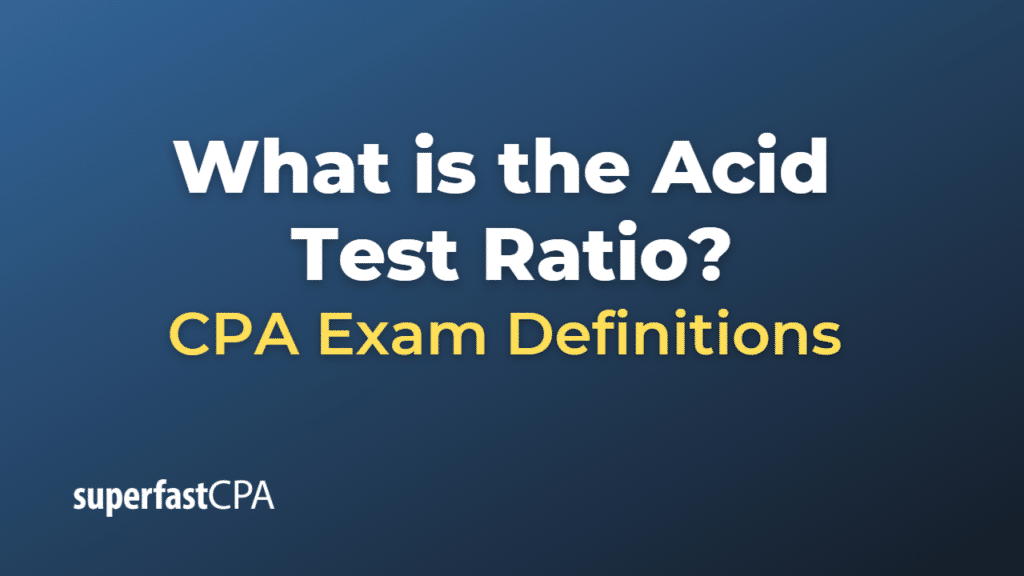Acid Test Ratio
The acid test ratio, also known as the quick ratio, is a financial metric that evaluates a company’s short-term liquidity by assessing its ability to pay off current liabilities without relying on the sale of inventory. The acid test ratio is a more stringent measure of a company’s financial health compared to the current ratio because it excludes inventory from current assets, focusing only on the most liquid assets.
The acid test ratio is calculated using the following formula:
\(\text{Acid Test Ratio (Quick Ratio)} = \frac{\text{Current Assets } – \text{ Inventories}}{\text{Current Liabilities}} \)
A higher acid test ratio indicates that the company is in a better financial position to cover its short-term obligations. Generally, an acid test ratio of 1 or greater is considered favorable, as it suggests that the company has enough liquid assets to cover its current liabilities without needing to sell inventory.
Example of an Acid Test Ratio
Let’s consider a hypothetical example of Company XYZ to illustrate the acid test ratio.
Company XYZ has the following financial information:
- Current Assets: $800,000
- Inventory: $300,000
- Current Liabilities: $400,000
To calculate the acid test ratio, we will use the formula:
\(\text{Acid Test Ratio (Quick Ratio)} = \frac{\text{Current Assets } – \text{ Inventories}}{\text{Current Liabilities}} \)
Applying the numbers from Company XYZ:
\(\text{Acid Test Ratio} = \frac{800,000 – 300,000}{400,000} \)
\(\text{Acid Test Ratio} = \frac{500,000}{400,000} = 1.25 \)
In this example, Company XYZ has an acid test ratio of 1.25. This indicates that the company has enough liquid assets (cash, marketable securities, and accounts receivable) to cover its current liabilities 1.25 times without relying on the sale of its inventory. A ratio of 1.25 is generally considered a good liquidity position, as it suggests that the company is capable of meeting its short-term obligations.














